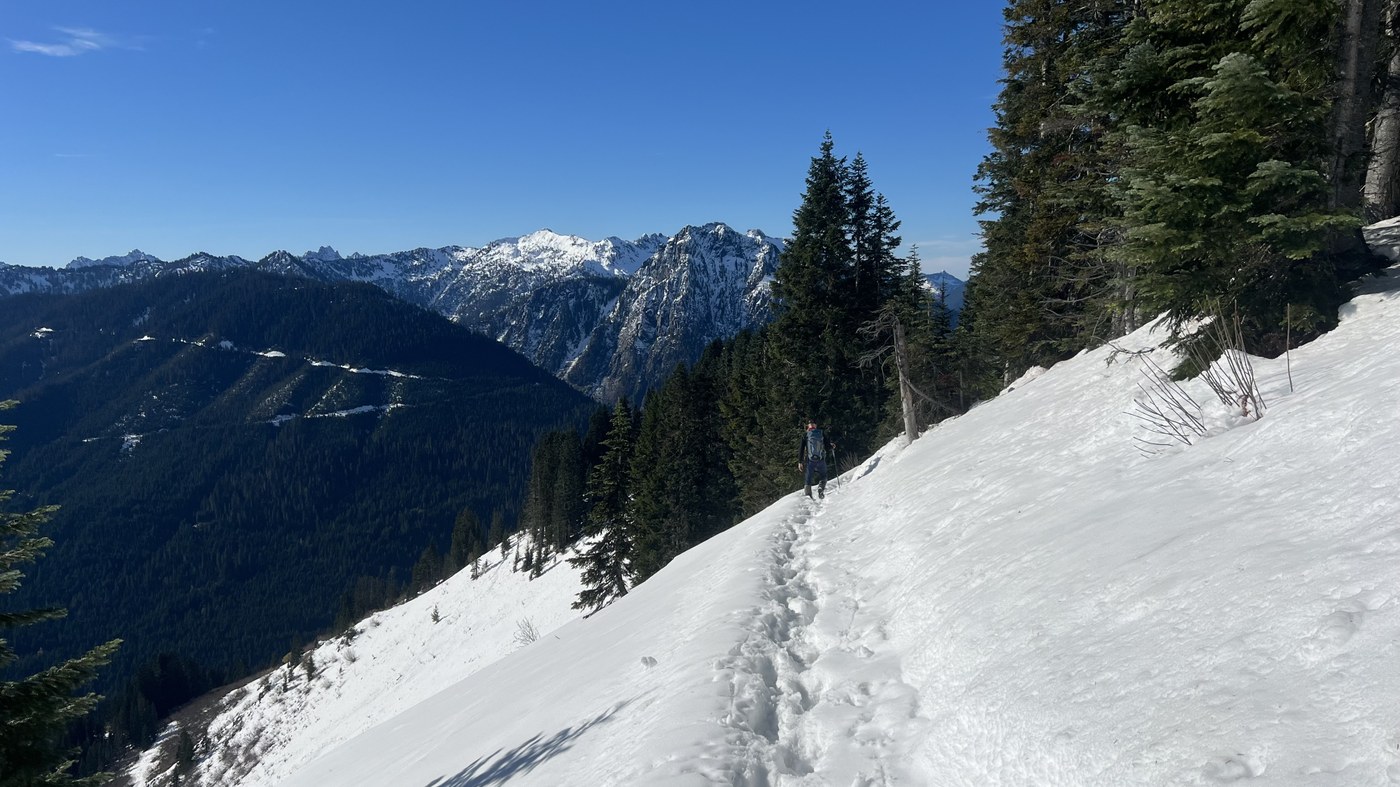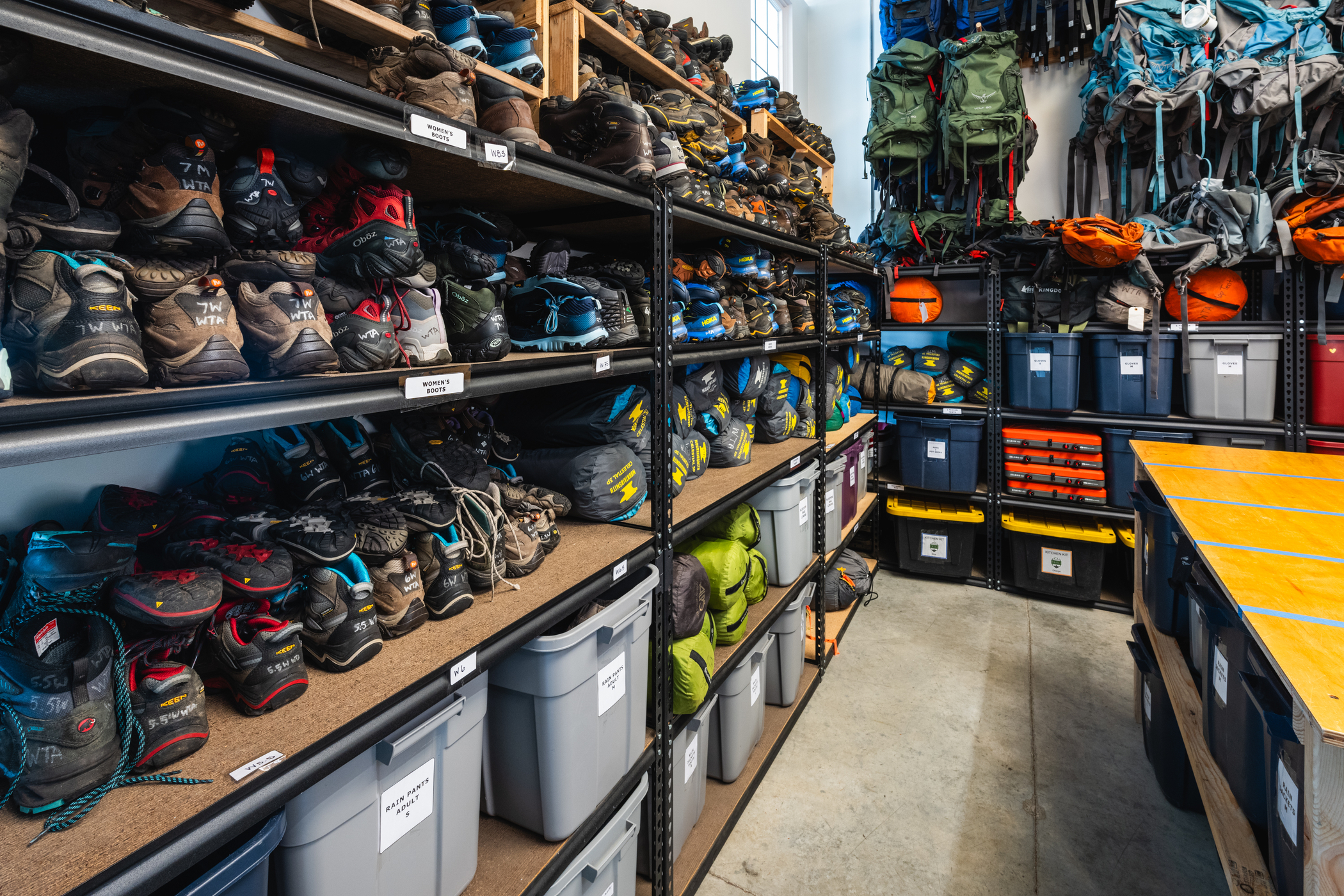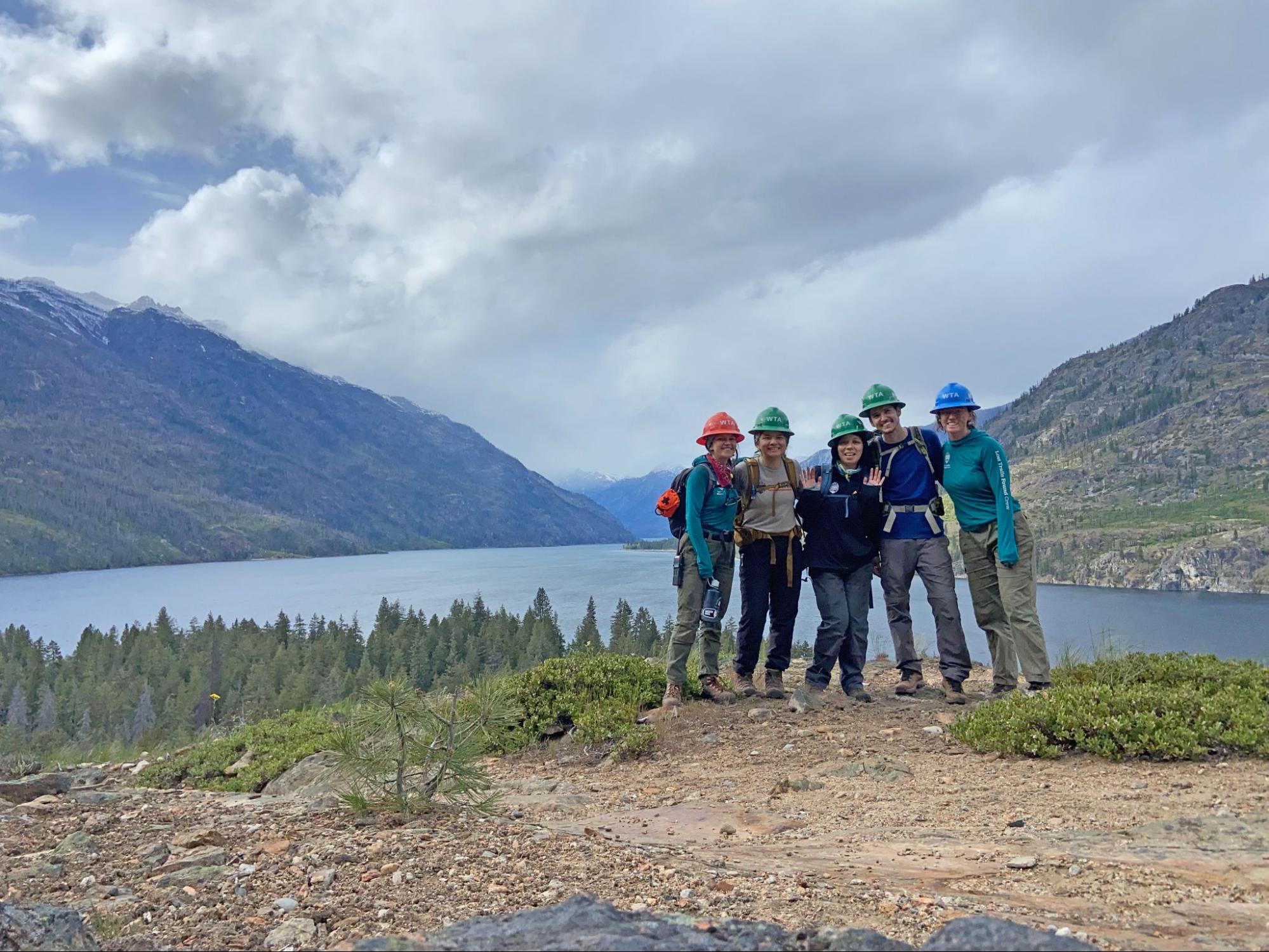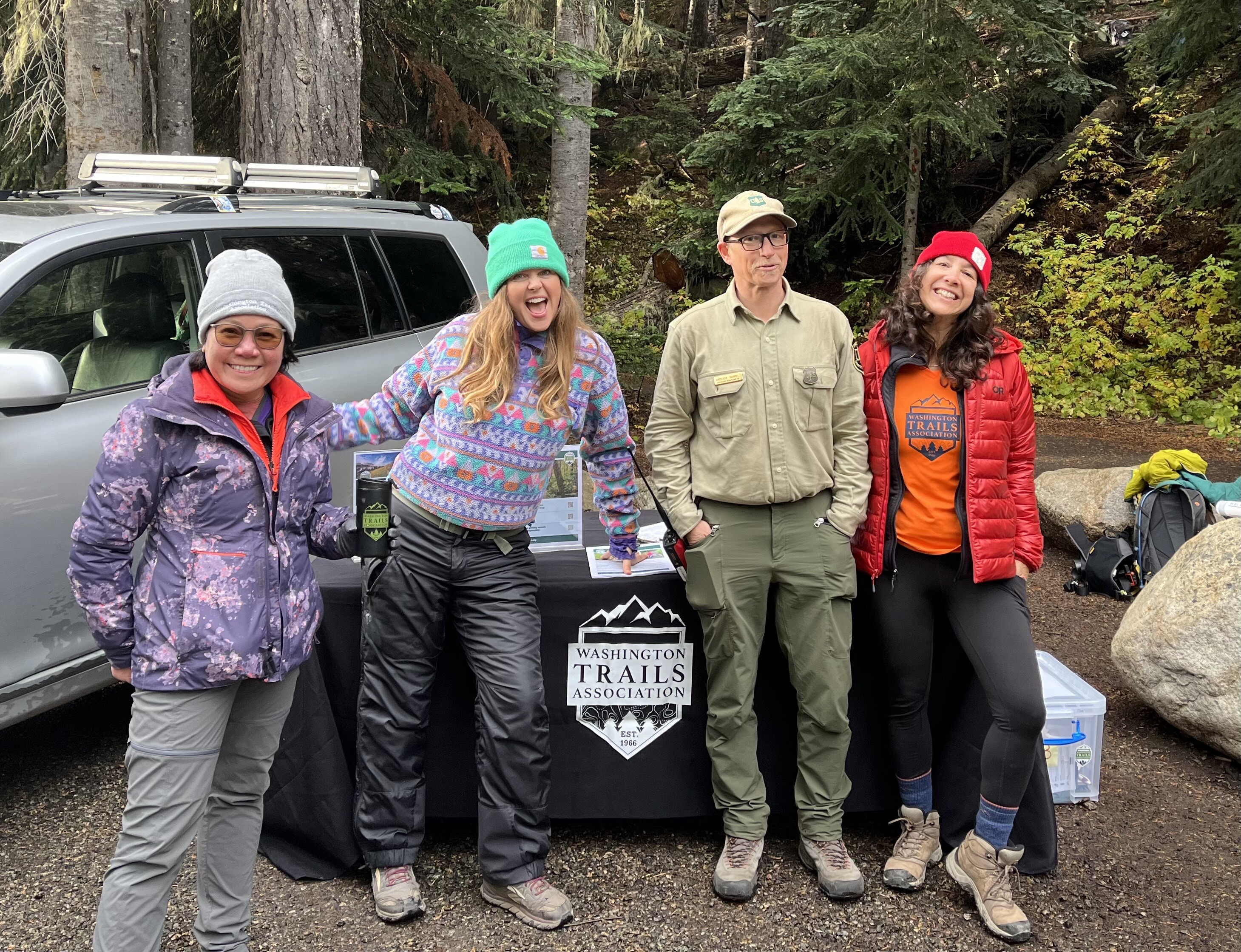5 surprising ways WTA members are making trails for everyone, forever possible
From equipping outdoor educators with snowshoes for their students to helping hikers at trailheads, here are 5 cool things our members support.
By Rebecca Viets
As a nonprofit, Washington Trails Association depends on the generosity of our members to make our programs possible. You’re likely familiar with our volunteer trail work or resources like our online Hiking Guide. Here’s five ways, however, you might be surprised to learn that member dollars help us work towards our vision of Trails for Everyone, Forever.
1. The latest hiking conditions
WTA’s online Hiking Guide provides detailed descriptions for over 4,000 trails in Washington, but we also host and moderate a space for hikers to help other hikers by posting current conditions. It’s a tradition that dates back to our founding in 1966 and since the mid-1990’s, hikers have written over 250,000 trip reports. There’s no better place to get current trail conditions than from someone who recently hiked there. Trip reports are also a great place to witness the kindness of the hiking community, with folks helping others with flat tires, return gear or offer care to an injured hiker.
 Trip reporters are essential for helping the trail community know what to expect, especially this time of year when conditions change rapidly. Trip reporter and WTA member kidz won't hike offered the latest conditions and gear tips from Frog Mountain earlier this month.
Trip reporters are essential for helping the trail community know what to expect, especially this time of year when conditions change rapidly. Trip reporter and WTA member kidz won't hike offered the latest conditions and gear tips from Frog Mountain earlier this month.
2. Advocacy and policy work
WTA alerts hikers to opportunities to speak up for trails through our Trail Action Network, but we also amplify their voices by meeting with our elected officials. Our advocacy team works with decision-makers in cities and counties all year long. They also travel to Olympia and Washington D.C. to advocate for state and federal policy advancements and funding that support trails and public lands.
 Michael DeCramer, WTA’s policy and planning manager, traveled to Washington D.C. in February to make sure Washington hikers’ voices were heard not only locally but also nationally.
Michael DeCramer, WTA’s policy and planning manager, traveled to Washington D.C. in February to make sure Washington hikers’ voices were heard not only locally but also nationally.
3. Getting outdoor educators what they need
Our Outdoor Leadership Training program helps prepare educators and youth program facilitators with the skills and resources they need to take their students and youth on outdoor adventures. Graduates of the workshop program also have access to gear from our lending libraries and can apply for funding assistance to help with costs such as transportation.
 WTA’s gear libraries support youth experiences in the outdoors by lending hiking boots, backpacks and more. Photo by Scott Kranz.
WTA’s gear libraries support youth experiences in the outdoors by lending hiking boots, backpacks and more. Photo by Scott Kranz.
4. Three crews who spend the season doing nothing but fixing trails
You're probably familiar with our extensive volunteer trail work program, but did you know that we also field professional Lost Trails Found crews? These unique crews tackle backcountry and technical trail projects during the summer season on long eight-day hitches. With member support, this program has grown from one crew in 2020 to three in 2024. (And we’re looking to hire 2025 crews right now.)
 One of WTA’s Lost Trails Found crews on a hitch to Domke Lake in April 2024. Photo by Kiana Smith.
One of WTA’s Lost Trails Found crews on a hitch to Domke Lake in April 2024. Photo by Kiana Smith.
5. helping & Educating hikers at the trailhead
WTA is committed to providing online resources, like our Trail Smarts series, to help hikers get outside safely and responsible. But this year we trained and deployed dozens of volunteer ambassadors at events and trailheads to greet hikers and answer their questions in-person. The effort has helped backstop land managers like the Forest Service, especially on busy weekends in popular locations.
 WTA ambassadors (like these three, who paired up with the Forest Service to educate hikers at Heather-Maple Pass during peak larch season) educate hikers at trailheads and events across the state.
WTA ambassadors (like these three, who paired up with the Forest Service to educate hikers at Heather-Maple Pass during peak larch season) educate hikers at trailheads and events across the state.
Over 56% of our funding comes directly from the support of our members. We couldn’t be more grateful for their support and the work that their generosity makes possible.


Comments